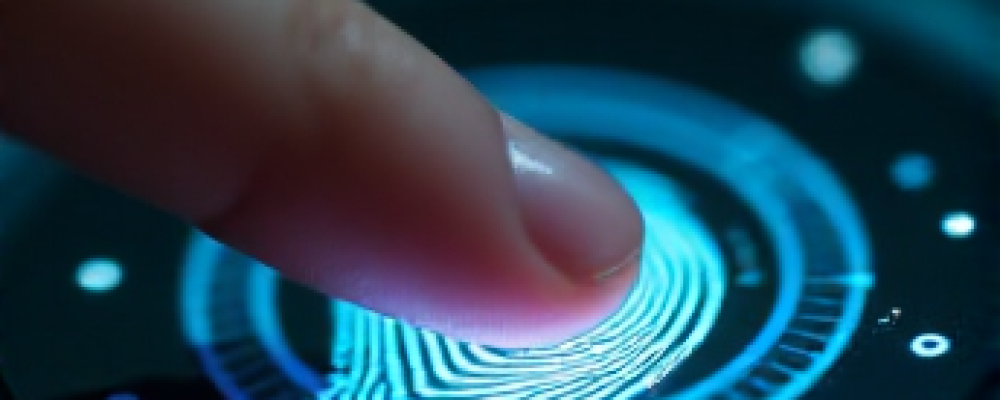In an increasingly digital world, verifying identity and securing transactions are paramount. Traditional methods like passwords and PINs, while still prevalent, face persistent challenges from sophisticated fraudsters. This is where the science of biometrics, specifically fingerprinting, steps into the spotlight, offering a robust and reliable layer of security against unauthorized access and illicit activities.
The Uniqueness of You: How Fingerprinting Works
At its core, fingerprinting leverages the unique patterns of ridges and valleys on our fingertips. These patterns, known as minutiae, are formed during fetal development and remain largely unchanged throughout our lives. Modern fingerprint scanning technology captures these intricate details, converting them into a digital template. This template acts as a unique identifier, far more difficult to replicate or steal than traditional credentials.
The security advantage stems from this inherent uniqueness. While passwords can be guessed, phished, or brute-forced, the probability of two individuals possessing identical fingerprints is astronomically low. This makes fingerprinting a significantly more secure method for verifying identity.
Securing the Gateway: Fingerprinting in Authentication
One of the most prominent applications of fingerprinting in fraud detection is in authentication. Think about unlocking your smartphone or accessing your online banking account. Fingerprint authentication provides a seamless yet highly secure way to confirm your identity. It eliminates the need to remember complex passwords, reducing the risk of weak or reused credentials, a major vulnerability exploited by cybercriminals.
Multi-factor authentication (MFA) often incorporates biometrics like fingerprinting as a crucial second factor. Even if a password is compromised, an attacker would still need physical access to the user’s fingerprint, significantly increasing the difficulty of unauthorized access. This layered approach strengthens security posture considerably.
Fighting Financial Crime: Fingerprinting in Fraud Prevention
The financial sector has widely adopted fingerprinting to combat various forms of fraud. Consider these scenarios:
- Preventing Account Takeover: By requiring fingerprint verification for sensitive transactions or account changes, financial institutions can effectively prevent fraudsters from taking control of legitimate accounts.
- Combating Credit Card Fraud: While not universally implemented yet, biometric payment cards with embedded fingerprint sensors are gaining traction. These cards ensure that only the authorized cardholder can make purchases, reducing fraudulent transactions.
- Securing Mobile Payments: Mobile payment platforms heavily rely on fingerprint authentication to authorize transactions, providing a secure and convenient payment experience.
- Identity Verification for New Accounts: Fingerprinting can be used to verify the identity of individuals opening new accounts, preventing the creation of synthetic identities used for fraudulent purposes.
Beyond Finance: Diverse Applications of Fingerprint Security
The applications of secure fingerprinting extend far beyond the financial realm:
- Access Control: From securing buildings and sensitive areas to controlling access to computer systems and networks, fingerprint scanners provide a robust and auditable method of access control.
- Law Enforcement: Fingerprinting has long been a cornerstone of forensic science and criminal identification. Modern databases and analysis techniques allow for rapid identification of suspects.
- Healthcare: In healthcare settings, fingerprinting can be used to verify patient identity, ensuring accurate medical records and preventing medication errors. It can also be used for secure access to medical facilities and sensitive patient data.
- Border Security: Many countries utilize fingerprint scanning at border crossings to verify identities and prevent illegal immigration and the movement of criminals.
The Security Measures Behind Fingerprint Technology
The security of fingerprinting isn’t just about the uniqueness of the patterns. Robust security measures are implemented to protect the captured biometric data:
- Encryption: Fingerprint templates are typically encrypted during storage and transmission, making them unintelligible to unauthorized parties.
- Template Protection: Sophisticated algorithms are used to create templates that are difficult to reverse-engineer or recreate the original fingerprint image from.
- Liveness Detection: Advanced fingerprint scanners incorporate liveness detection techniques to ensure that a real, living finger is being presented, preventing the use of fake or spoofed fingerprints. These techniques can include analyzing blood flow, skin conductivity, or even subtle movements.
- Secure Storage: Fingerprint templates are often stored in secure enclaves or trusted execution environments, isolated from the main operating system to prevent unauthorized access.
Addressing Concerns and Looking Ahead
While fingerprinting offers significant security advantages, it’s important to address potential concerns. Privacy is a key consideration, and regulations like GDPR aim to protect biometric data. It’s crucial that companies and organizations are transparent about how they collect, store, and use fingerprint data. Furthermore, while fingerprinting is highly accurate, no system is entirely foolproof. Factors like injuries or dirt on the finger can sometimes affect recognition. However, advancements in sensor technology and algorithms are continually improving accuracy and reliability.
Looking to the future, we can expect even more sophisticated fingerprinting technologies to emerge. Developments in under-display fingerprint sensors, ultrasonic scanning, and even integration with other biometric modalities like facial recognition promise to further enhance security and convenience. The ongoing research and development in this field are testament to the enduring importance of fingerprinting in securing our increasingly interconnected world.
Consider the convenience of unlocking your devices or accessing your accounts with a simple touch. This seamless experience is powered by the robust security of fingerprinting, a technology that plays a crucial role in safeguarding our digital lives and combating the ever-evolving threat of fraud. As technology progresses, so too will the sophistication and security of fingerprinting, solidifying its position as a cornerstone of modern security practices. Companies like Unifers understand the critical role of secure identity verification. They offer innovative solutions leveraging biometrics, including advanced fingerprinting, to help businesses establish trust and prevent fraud in today’s digital landscape. Their focus on user-friendly and secure authentication methods makes them a valuable partner in the fight against online crime.









